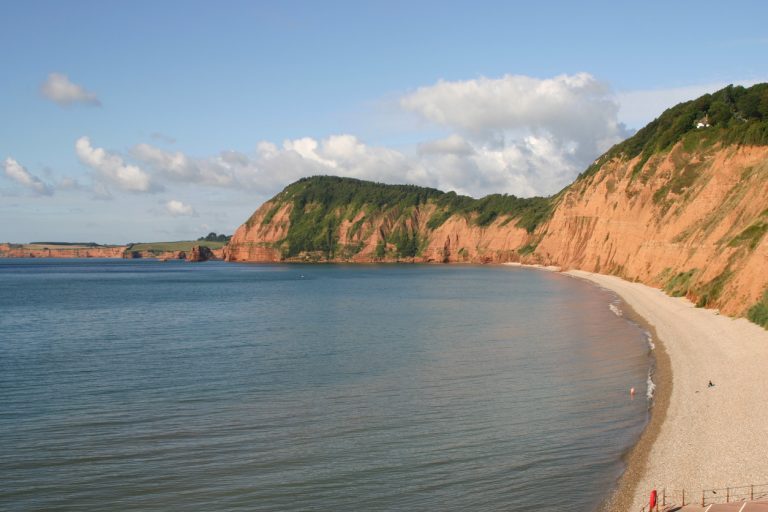20 fun things to do in Plymouth, Devon (2024 guide)
Are you looking for fun things to do in Plymouth? Read on for my full guide!
“I’m biased, but I think that we’re standing in what is arguably the most important harbour in the world”, our guide James told us as we stood, overlooking Plymouth Barbican.
Known as Britain’s Ocean City, Plymouth’s long history is certainly ever-prominent as you explore the Barbican and follow the pathway that leads up toward the Hoe.
Tales of the Mayflower ship leaving Plymouth, the city’s navy base and the Spanish Armada being spotted from Plymouth Hoe will enthral you.
But it’s not just history in Plymouth – nature lovers can bask on nearby beaches, perhaps going stand-up paddleboarding and hiking the South West Coast Path – or, if it’s rainy, the city’s home to the biggest aquarium in the country.
Fans of a tipple will love touring the world’s longest continuously operating gin distillery or bar hopping around Plymouth’s many pubs.
There’s so much to do in Britain’s Ocean City.
I’m a Devon local, living in Exmouth which is around an hour’s drive from Plymouth.
So I’ve visited plenty of times, both to learn about its fascinating naval history, to enjoy outdoor activities and to just bask on the nearby beaches!
Here’s my full guide to the best things to do in Plymouth, with plenty of local tips to help you make the most of your time here!
Best things to do in Plymouth
The best things to do in Plymouth include touring the world’s continuously operating gin distillery, walking around the gorgeous coastline, stepping back in history at the Barbican, exploring nearby nature spots and visiting its famous aquarium.
1. Tour around the gin distillery
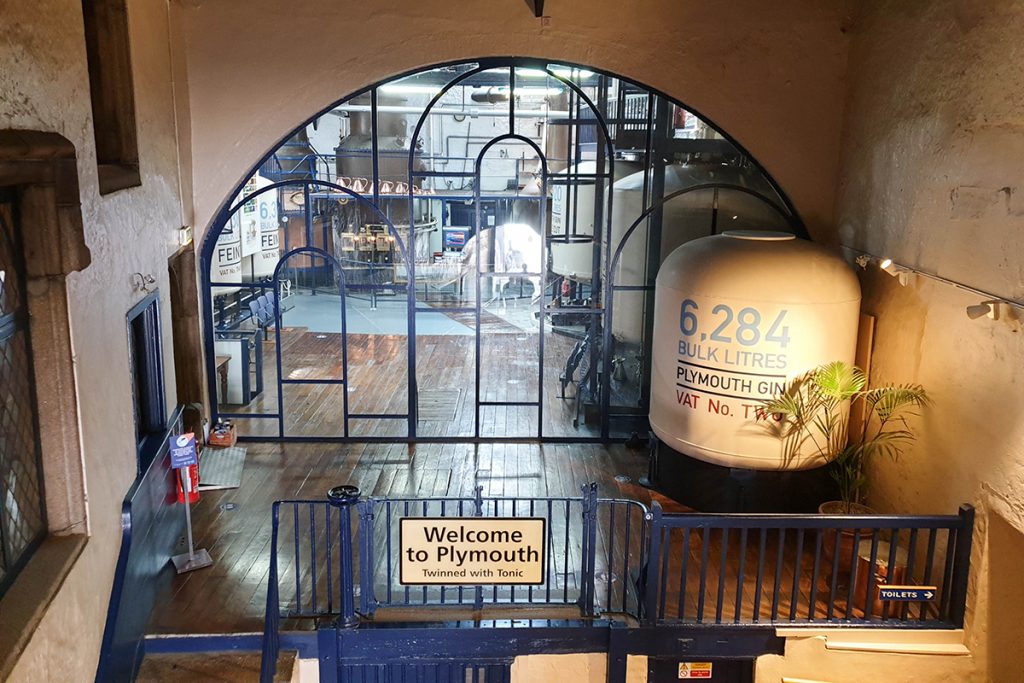
The Plymouth Gin Distillery is the longest-running in the country, and tours run daily.
They involve a glance at the Medieval origins of the building (some original parts are still visible), education about the distilling process of gin and – everyone’s favourite part – gin tasting.
Not only will you try a range of gins (including Navy strength, which is around 57% alcohol) and delicious sloe gin, but also learn about the different botanicals that make types of the spirit.
If tours aren’t available, you can also visit the on-site bar and restaurant to try a gin cocktail.
Being a gin lover, this is one of my favourite things to do in Plymouth!
See my full post about the Plymouth Gin Distillery for more details.
2. Stroll around Sutton Harbour
Sutton Harbour is a gem on a sunny day.
Colourful boats float on the water which sparkles in the sunlight, and a pedestrian path wraps around the water.
There are a few restaurants here with al fresco seating; listen to the sound of the seagulls and breathe in the salty area as you dine on fish and chips or an ice-cold glass of Plymouth gin and tonic.
I love Stable for pizza, Boston Tea Party for brunch or Miller and Carter has one of the best views in town.
3. Go to the Mayflower Steps and Museum
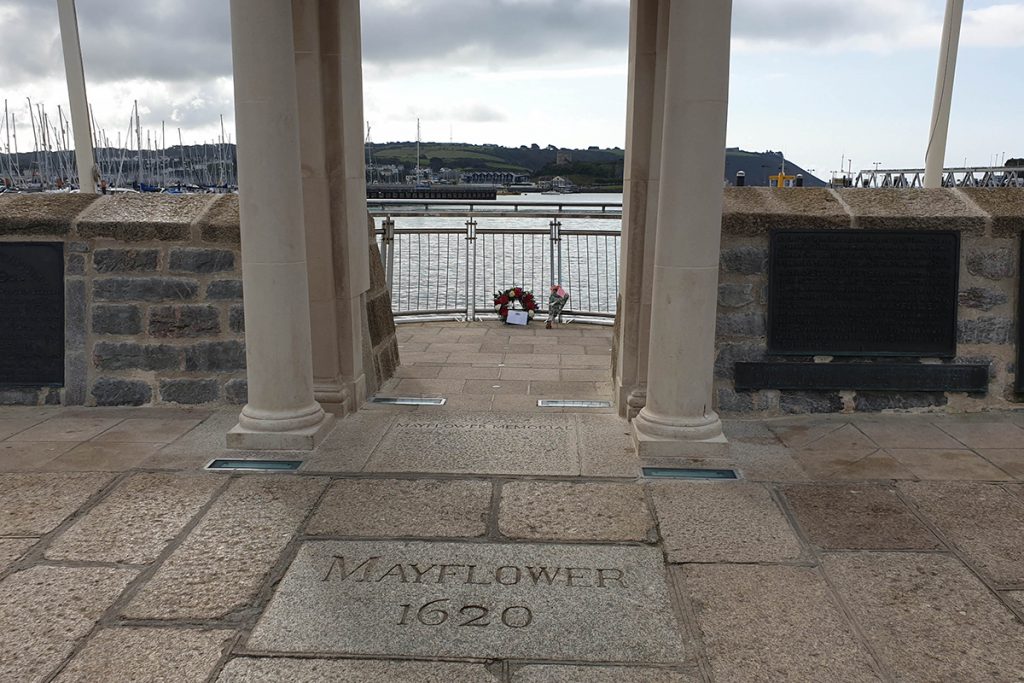
On the Barbican, by the Plymouth tourist information centre, you’ll find the Mayflower memorial which commemorates the Mayflower boat departing from Plymouth to reach the USA.
The Mayflower is most famous for being a ship that transported pilgrims from the UK to the USA in 1620.
However, while a number of the passengers were part of a religious group, there were also tradespeople and other passengers on board as well.
The pilgrim group, however, have become synonymous with the voyage.
Originally from the UK, the pilgrims fell out of favour here due to extreme religious views. They then moved to Leiden in the Netherlands, where they stayed for a while but struggled to assimilate into the culture.
So, when the opportunity came up for them to move to “The New World” (of course, this moniker is problematic when you consider that it certainly wasn’t a “new world” for Native Americans who’d lived there for tens of thousands of years), they lept at it.
They sailed from the Netherlands to the UK, ending up in Plymouth and spending a few weeks here while the Mayflower’s sister boat, the Speedwell, was being repaired – although she was eventually declared unfit for the journey.
They ultimately departed on 16th September 1420.
The pilgrims influenced day-to-day Plymouth life substantially, and of course, when they reached the “New World”, they had a part in completely changing the course of global history.
They weren’t the first European settlers in North America, but they are perhaps the most famous.
While it was a new world to Europeans, Indigenous people already lived there; and Europeans settling was the start of their population being decimated.
There has been more awareness of this in recent years; when I visited Plymouth once, there was an instalment with the words “NO NEW WORLDS”, representing how while it was a new world for Europeans, people already lived there.
You can read more about the Mayflower story by clicking here.
The Mayflower Steps descend into the water from their spot on the Barbican.
However, while they are called the Mayflower Steps, they’re a bit of a misnomer – the pilgrims didn’t actually use these steps – they’re a replica that was built in 1934!
Above the tourist information centre, you’ll find the Mayflower Museum, an exhibition focusing on the journey that opened for its 400th anniversary.
There is a decent amount of information about the native communities who already lived in North America, so it’s also worth visiting to increase your knowledge about native treatment at the hands of Europeans.
4. Do a sightseeing Tamar cruise
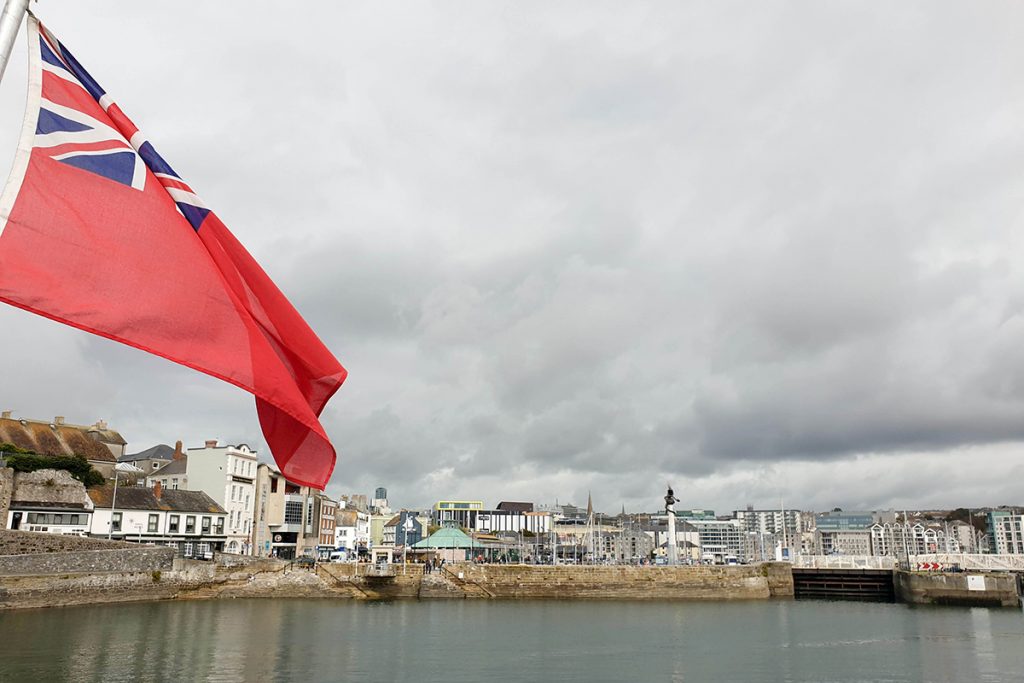
Separating Cornwall and Devon, the River Tamar has been one of the UK’s most crucial waterways for centuries.
It acted as a natural barrier between counties (in fact, many Cornish locals often mention how it’s one of the world’s oldest borders) isolating the furthest southwestern region of the UK.
Because of the River Tamar, Cornwall is nearly an island, and this caused it to retain its Celtic culture; not many Romans made it down this far, and it was never Anglo-Saxon like the rest of England.
This gives Cornwall the distinct identity that it still holds onto to this day!
Nowadays, the River Tamar is much easier to explore; and one of the best ways to do so is by embarking on a cruise from the Barbican.
You’ll learn about both sides of the river, with discussions about how it shaped Plymouth as a city today, and the influence of the river on Plymouth’s strategic position as a naval port.
5. Check out Plymouth Hoe

Rising up from the Barbican, Plymouth Hoe gazes over the sound and its enchanting coastline.
It’s been a focal place of Plymouth life and culture for centuries, and a short walk around the Hoe area will showcase some of the area’s best historical attractions.
Don’t miss:
- The statue of Sir Francis Drake: he was playing bowls in this very spot when he spotted the ships from the Spanish Armada back in 1588. However, he’s not someone who I would consider statue-worthy due to his connections with the slave trade.
- The Beatles Bums: an iconic photo was taken of the Beatles when they were in town filming the Magical Mystery Tour. You can now sit in the exact position they were in and recreate the photo, thanks to the Beatles bums – imprints of their behinds which show exactly where to perch!
- Smeatons Tower Lighthouse: a historic lighthouse that was constructed in 1757. It is no longer functional but stands to celebrate the engineer John Smeaton. You can climb to the top and enjoy perhaps the best views in the city (more information about opening times here).
6. Take a dip in Tinside Lido
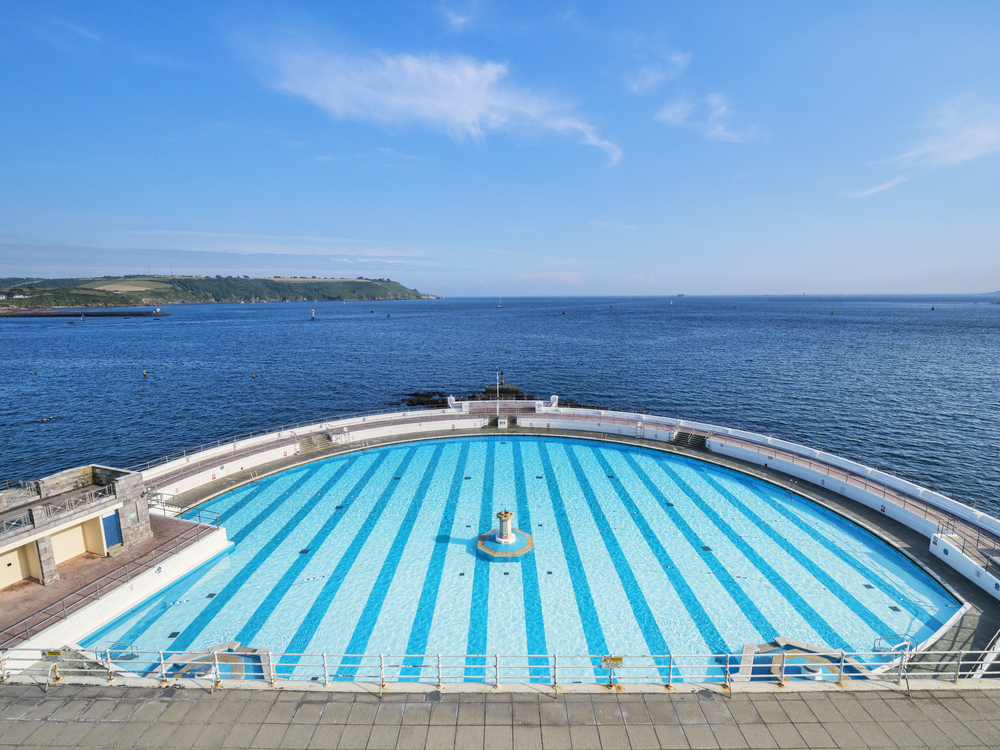
Dating back to 1935, the Grade-II listed Tinside Lido is decorated in Art Deco style.
It’s a saltwater outdoor swimming pool that’s open in the summer months.
Here, you can float in the water and enjoy vistas of the beautiful coast – a dream on a summer’s day!
Walk-ins are permitted, but it often reaches capacity – iso it’s recommended to book online on the Plymouth Active website.
7. The Royal Citadel
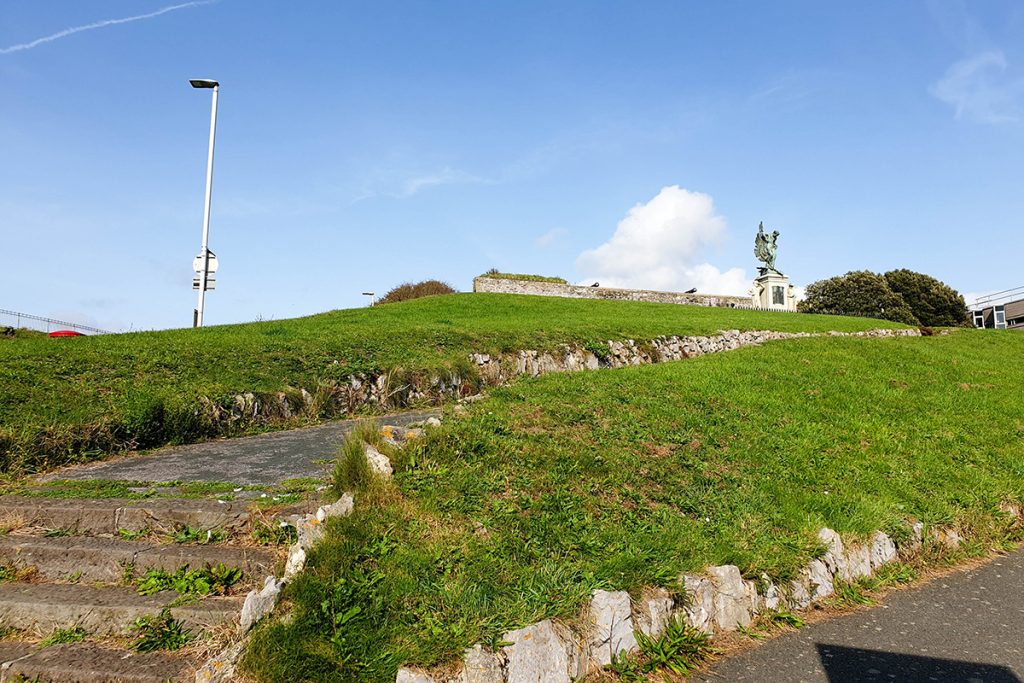
Plymouth’s military fortress, the Royal Citadel was built in the 17th century and subsequently used to defend Plymouth maritime attacks.
It’s still a military base to this day, so it isn’t open to the public for independent visits.
However, it can be visited on pre-arranged tours, where you can learn all about Plymouth’s military past and present with a knowledgeable guide!
The English Heritage runs tours there at set times – click here to book one.
8. Explore Royal William Yard
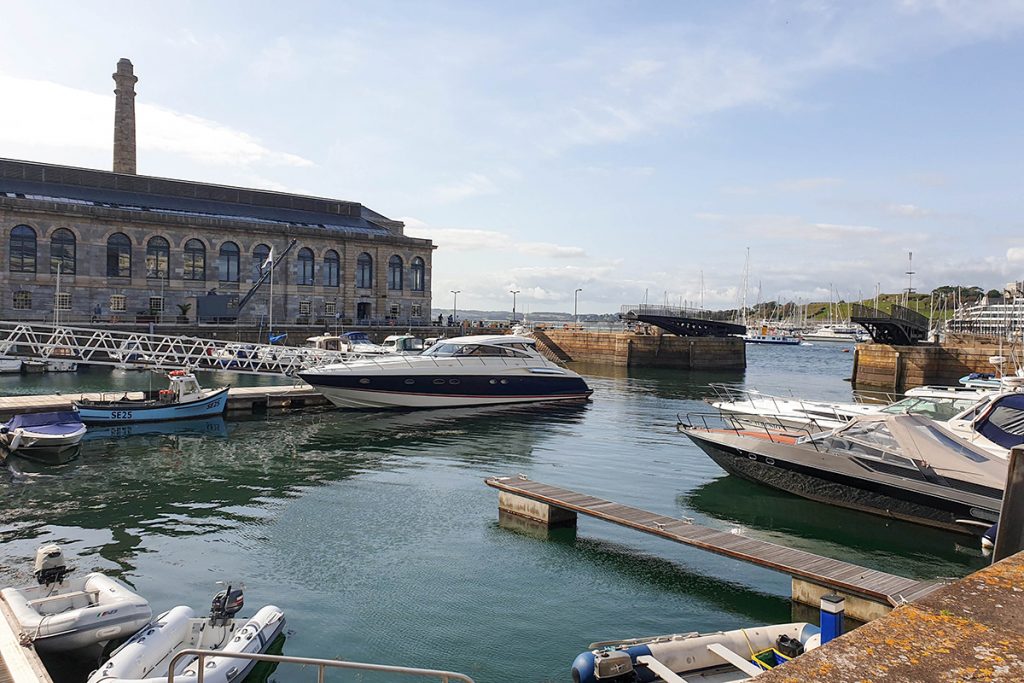
Kick back in the ex-victualling depot, dating back to the 19th century, which is adjacent to a Devonport dockyard.
This is probably my favourite part of the city – I love the historic architecture, ocean views and excellent range of restaurants.
It was, for some time, a shell of a building, but has since been revitalised to house restaurants, cafes, bars and some of the swankiest flats in the city.
It’s home to what must be one of the most scenic Wagamama restaurants in the country; from here you can tuck into a bowl of ramen or donburi while enjoying a view over the water.
There’s also a Prezzo, or if you’re more interested in independents, check out The Hook and Line and Bistrot Pierre.
There’s plenty more to explore in Royal William Yard; the architecture is beautiful and stand-up paddleboarding sessions often leave around the water here. (Check out South West SUP for more information)
There’s even a co-working space – like all of the UK, there are loads of work-from-home opportunities in Plymouth but lots of locals head to Royal William Yard to work in a more social atmosphere.
9. Get educated at the Box Museum
What makes Plymouth the ocean city? How has its coastline impacted its culture over the centuries? And how significant is the city’s royal naval base?
All of these questions are answered at Plymouth’s fascinating Box Museum which has a range of exhibits and is one of the best things to do in Plymouth to learn local history!
It’s a relatively new museum, only opening in 2020, but it boasts some incredible exhibitions about the Mayflower Museum, Plymouth’s strategic position on the coast, and the nature surrounding the Plymouth area.
Entry is free but you should reserve your time slot before going.
Visiting Plymouth on a budget? This list of cheap hotels is here to help.
10. Go to the country’s biggest aquarium
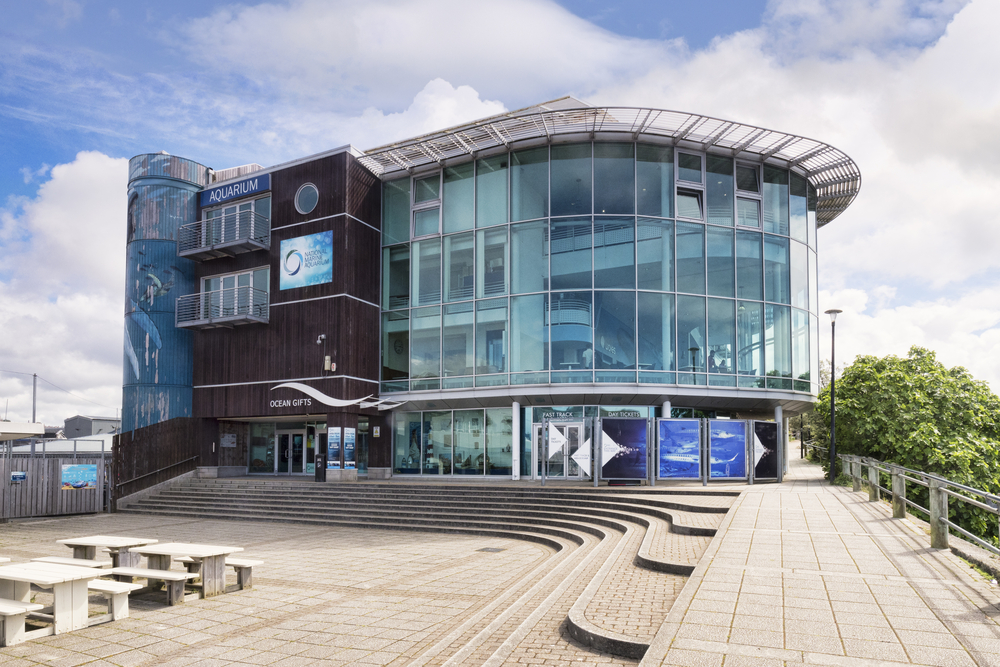
Searching for kid-friendly attractions in Plymouth?
Littl’uns will be delighted at the marine life at the National Marine Aquarium; it’s home to a variety of sea animals, both from Devon’s waters and further afield.
Run by the Ocean Conservation Trust, money spent at this aquarium goes towards protecting the world’s seas and provides valuable education on the importance of conservation.
11. Hang out at the Mount Batten beaches
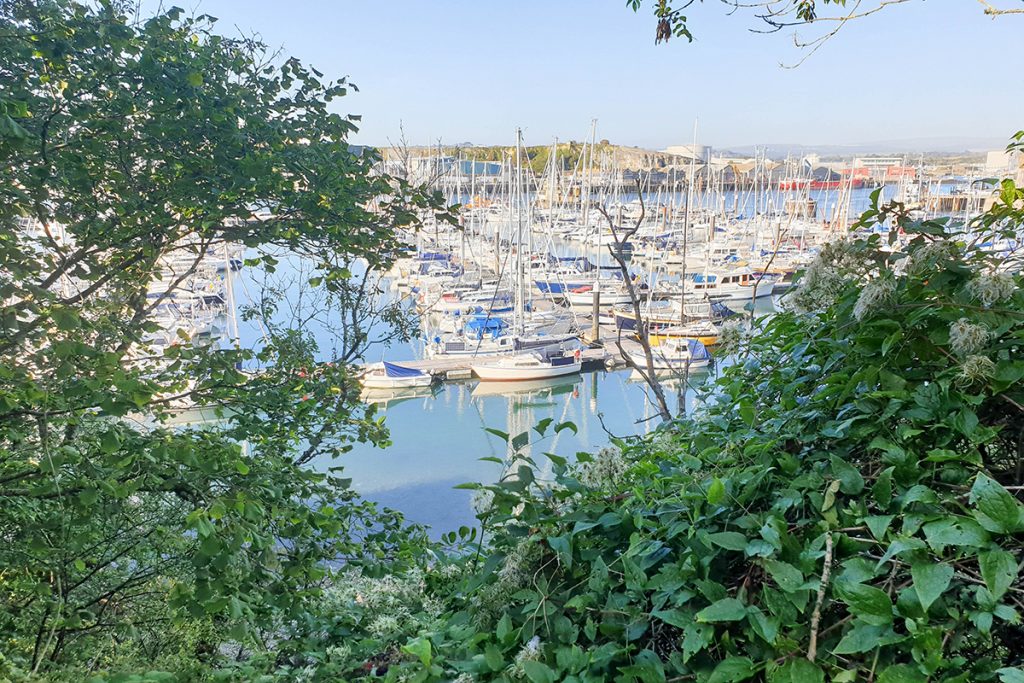
Despite it hugging the coastline, there isn’t a beach right in Plymouth city – but you can easily access some of its nearest by taking a boat from the Barbican over to Mount Batten.
Here, you’ll find Jennycliff and Mount Batten Beach, both sandy expanses that are ideal for a quick break from the city.
The South West Coast Path runs past both of them, so you can enjoy a seaside walk or just kick back and relax on the beach!
You’ll find a few restaurants and bars nearby too; The Bay is a personal favourite of mine.
Check out my full list of the best beaches around Plymouth!
12. Take a ferry to Mount Edgcumbe
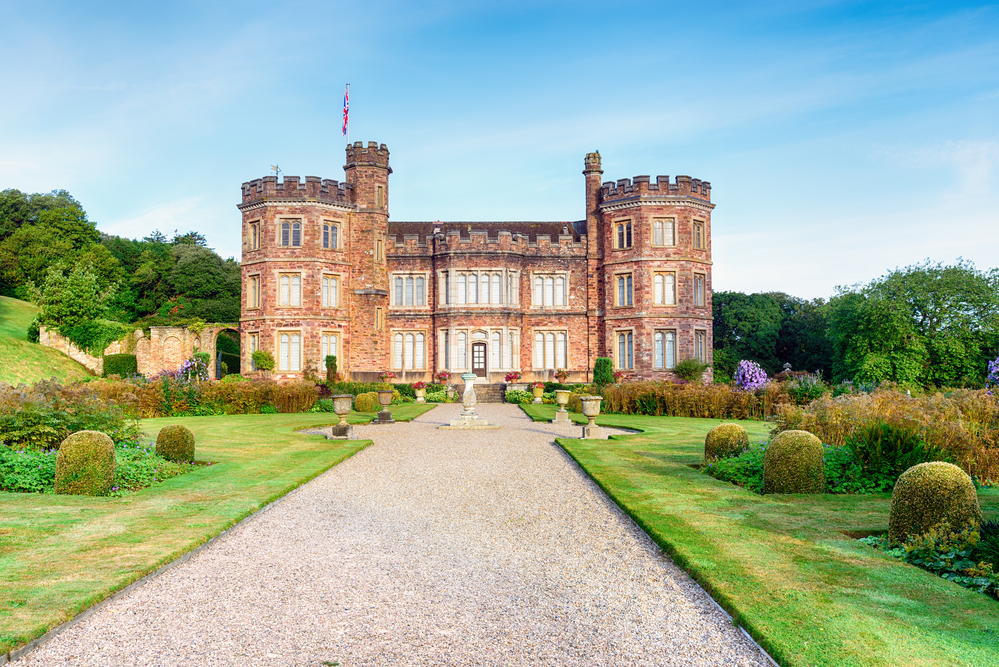
The Cremyll Ferry departs from Admirals Hard in Stonehouse (close to Royal William Yard) and sails across the Tamar, sailing to Mount Edgcumbe.
This boat is actually used by commuters who live in Cremyll and work in the city – it takes just eight minutes to cross the river!
But, if you’re visiting as a tourist, you’ll probably be taking the ferry to explore the 860 acres of Mount Edgcumbe Country Park.
This estate dates back 400 years; it’s been the home of the Earls of Mount Edgcumbe for centuries.
While you’re here, explore the 18th-century formal gardens. Mount Edgcumbe House is a wedding venue, but you can visit some parts as a tourist. It dates back to the 1500s and was extended in World War Two.
Go South West Pro Tip: Visit Mount Edgcumbe on a dry day – while you can see some of the house, the gardens and estate are the big attraction here.
13. Take a boat to the villages of Cawsand and Kingsand and explore the Rame Peninsula

Take another sojourn into Cornwall by hopping on a boat to the Rame Peninsula.
Here, you’ll find the sleepy villages of Cawsand and Kingsand, where a coastal path trail ascends out of the villages and leads towards Rame Head.
This area is known as “forgotten Cornwall”, because it’s not often visited by tourists.
There aren’t any train links and to drive, tourists cross the Tamar and then have to almost go back on themselves through country roads!
In fact, the best way to visit the Rame Peninsula is by boat from Plymouth!
Enjoy the seaside culture of Cawsand and Kingsand (two of my favourite Cornish fishing villages) and the gently rolling waves of the beaches (two of the most relaxed beaches in Cornwall), or hike to the top of the nearby cliffs and see the picturesque vistas.
The hike to Rame Head is one of the least explored on the South West Coast Path, but that doesn’t make the views any less mesmerising!
14. Visit the Elizabethan House
Back in Plymouth, let’s go back to the Elizabethan era!
As the name suggests, this attraction is a late-Tudor property, dating back to when Plymouth was one of the world’s busiest ports!
It’s nowadays an immersive museum – when you visit, you’ll step straight back into four centuries of history, with many of the rooms still decorated to how they looked during the time.
You’ll learn about the history of Plymouth’s Barbican, with props including a fishing rod to represent the industry and a dreidel to show the Jewish heritage of the house.
As it’s such an immersive experience, it’s one of the best things to do in Plymouth with kids; chat with the volunteers as you go around to learn more!
15. Hike from Plymouth to Wembury on the South West Coast Path
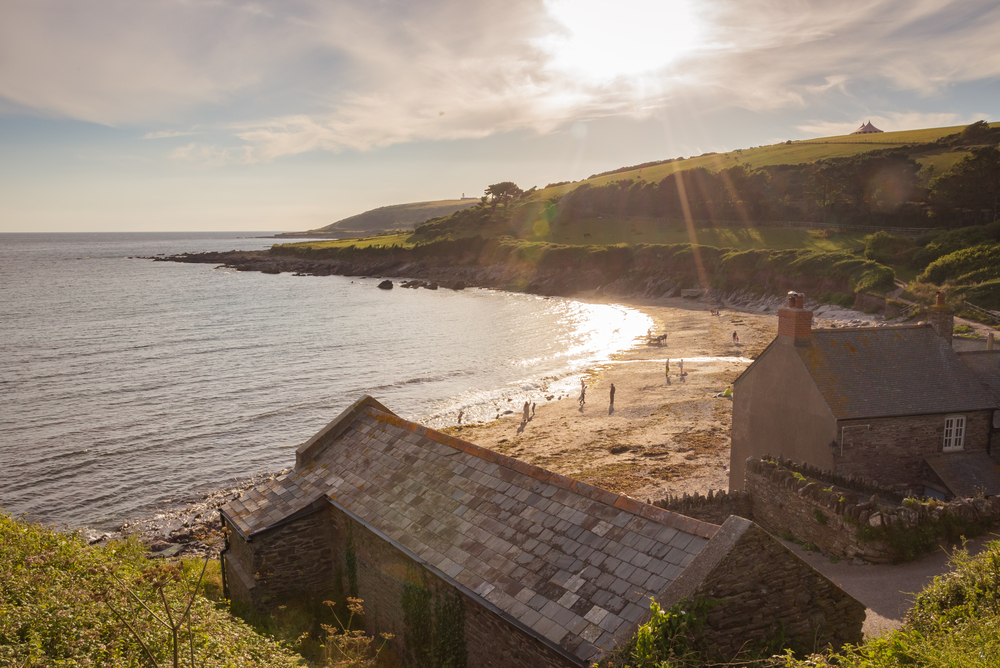
The South West Coast Path spans 630 miles through Somerset, North Devon, Cornwall, South Devon and Dorset.
This means that a section of the coastal path spans around Plymouth – it’s the only city that the path runs through – and one of the best hikes in the area is the 10-mile/17-kilometre section from Plymouth to Wembury.
Either walk or take the ferry from Plymouth Barbican to Mount Batten and bypass its beautiful beaches, including Jennycliff.
You’ll then bypass Bovisand and reach Wembury, with lovely views along the way – you can also extend the walk to the River Yealm.
When you reach Wembury, take the 48 bus back to Plymouth (taking around 33 minutes).
Check out my list of the best walks around Plymouth here!
16. Take a tour of the Plymouth Synagogue
The oldest Ashkenazi synagogue in the English-speaking world is in Plymouth, this Grade II* listed structure dates back to 1762 and is famous for its Georgian architecture.
You can visit the synagogue on a guided visit with Custodian Jerry Sibley; he does these tours unpaid and in his own time, so when you can do the tour depends on his availability.
17. Visit Devonport Guildhall and Column
Discover Devonport, Plymouth’s heritage hotspot, where Regency splendour meets modern enterprise.
Once a town in its own right, Devonport grew as a naval powerhouse in the 18th and 19th centuries, thanks to the docks and Royal Navy activities in the area.
Unlike other areas in Plymouth, it was remarkably unscathed in the WWII blitz.
Marvel at the Grade 1 listed Devonport Guildhall and Column, which boast some of the finest Regency architecture in the city.
Devonport Guildhall is now a vibrant hub for creative businesses, co-working and community pop-up events – so do swing by and see what’s on!
You can also enjoy fresh bread from Heyl bakery, made on-site in their enterprise kitchen.
18. Join a scuba diving trip
Plymouth may not immediately leap to mind when you think of scuba diving destinations around the world.
However, its position on Britain’s oceanfront, plus its rich naval heritage means that there is a range of wrecks to explore in the waters around the city!
Sound Diving Plymouth offer SCUBA trips to some of Devon’s best sites – if you’re qualified, get in touch to enquire about fun dives – if you’re not, you can get your certification here!
19. Saltram House

Step back in history at Saltram House, a beautiful estate and mansion set in a green oasis by the River Plym.
The house was owned by the Parker family from 1743, and you can step inside this National Trust property to admire the Chinese wallpapers, the paintings by Sir Joshua Reynolds, and the Neo-classical Saloon by Robert Adam.
Don’t miss the amazing country house library, the beautiful gardens and the 18th-century orangery, along with walking trails leading down to the River Plym!
Saltram House is a National Trust property; so National Trust members get free entry.
20. Take a day trip from Plymouth
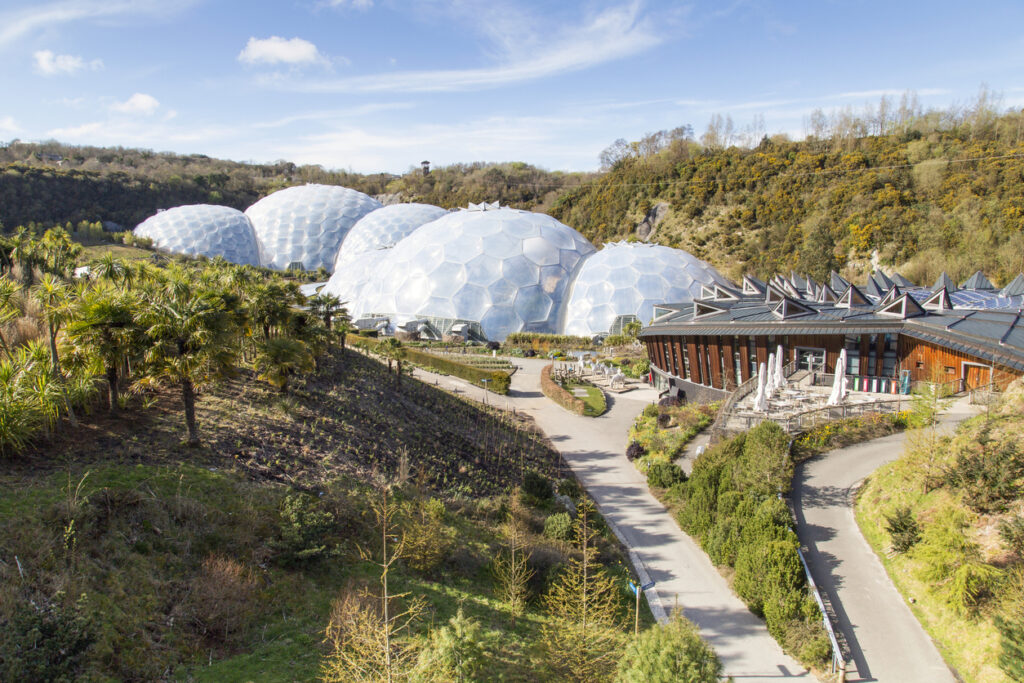
There are plenty of things to do around Plymouth, in both West Devon and East Cornwall.
You can take a look at my day trips from Plymouth for my full guide – but here’s a list of the best!
The Eden Project: This attraction consists of two giant biomes, each with a different climate. There’s the rainforest biome, which has tropical plants and the Mediterranean biome. There are also gardens with typical Cornish and British plants.
Dartmoor National Park: This Devonshire park is a huge moor, home to lots of hiking trails and Dartmoor ponies! It’s a great place to get lost in nature and enjoy moorland and woodland. If you want history, visit the Dartmoor Prison Museum or head to the Highwayman Inn on the north of the moor for a fascinating pub (that’s been designated as the weirdest in the country!). For first-time visitors, I highly recommend going to Becky Falls Woodland Park and the surrounding area.
The English Riviera: Torquay, Paignton, Babbacombe and Brixham all make up ‘The English Riviera’. Enjoy gorgeous beaches around all of the towns, along with plenty of activities for all age, from watersports to cultural attractions. Check out my things to do in Paignton and my things to do in Torquay guides for more information.
Exeter: Exeter is Devon’s other city. It’s a fun place to spend a weekend in, but a day trip there from Plymouth is feasible. Don’t miss the cathedral and the Medieval tunnels under the city!
Now you know the best things to do in Plymouth!
A maritime city with centuries of history basking in the most beautiful surroundings, Plymouth is jam-packed with historical sites, museums with interactive exhibits and nearby nature.
Whether you’re spending a weekend here or have moved to the city, there’s plenty to get started on this list!
It’s ideal for anyone who wants to learn more about the UK’s naval and maritime history, but you can take just a short walk along the coast to take in incredible panoramic views from the South West Coast Path.
Don’t forget to check out my where to stay in Plymouth guide as well!
I hope that this Plymouth travel guide has been helpful! Don’t forget to check out the rest of my Devon archives and let me know on Instagram if you have any questions – I’ll try my best to help out!




